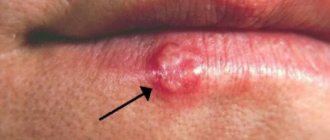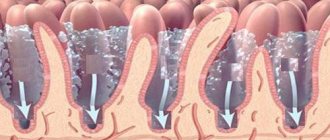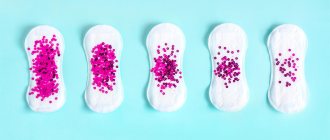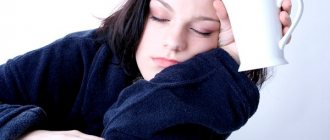Diarrhea is a symptom that is quite common in pediatric practice. In a child, starting from the age of one, the frequency of stool varies from 1 to 2 times a day. Fecal masses should be shaped, brown in color and moderately hard. There should be no impurities of blood, greens and mucus. With diarrhea, there is an increase in stool frequency, and stool becomes unformed. Before treating diarrhea in a child, you should familiarize yourself with the latest information to avoid mistakes.
Diarrhea in infants: causes and treatment methods
Diarrhea (diarrhea)
- This is an increase in stool frequency and a change in its consistency.
The frequency and nature of stool depends on the age of the child, the type of feeding (breastfeeding, mixed, artificial) and its individual characteristics (Table 1).
So, in breastfed children, the stool in the first six months (before the introduction of complementary foods) is usually homogeneous, mushy, yellowish in color, up to 5-7 times a day. This is the norm. An increase in frequency up to 10 times or more, complete absorption of stool into the diaper - manifestations of diarrhea.
With the introduction of formula and complementary feeding products, stools become less frequent and thicker, and change in color and smell. Bowel movements more than three times a day and a change in consistency to liquid or watery are signs of diarrhea.
Table 1. Stool frequency in young children
| Age | Number of bowel movements per week | Number of bowel movements per day (average) |
| 0-3 months breast-feeding artificial feeding | 5 – 40 5 – 20 | 2,9 2,0 |
| 6 – 12 months | 5 – 28 | 1,8 |
| 1 – 3 years | 4 – 21 | 1,4 |
| 4 years and older | 3 – 14 | 1,0 |
According to the Bristol Stool Form Scale, stool types 5-7 are manifestations of diarrhea and indicate an increase in the speed of passage of the bolus of food through the gastrointestinal tract.
Treatment
Help before diagnosis
If a child has diarrhea, he should be given water regularly to prevent exicosis. Lightly salted boiled water, dried fruit compote, and weak herbal tea are suitable for these purposes. The liquid is given in small portions (1-2 teaspoons) every 5-10 minutes. After loose bowel movements, you should give 50-200 ml of water, depending on age and weight. If you categorically refuse to eat, you cannot force the child to eat.
To quickly remove toxins from the body, you can use enterosorbents. Self-prescribing treatment with antibiotics and other medications is prohibited. If diarrhea in a child is accompanied by blood in the stool, complete refusal of water and food, or a sharp increase in temperature, you need to seek emergency medical help. Another warning sign is sharp abdominal pain, especially in the right side of the abdomen, which may indicate appendicitis.
Conservative therapy
Children with satisfactory general condition are treated on an outpatient basis. The remaining categories of patients are subject to hospitalization in an infectious disease, gastroenterological or surgical hospital. Since acute infectious diarrhea is most common, the main principle of therapy is adequate rehydration. According to the severity of exicosis, it is carried out according to three schemes:
- Plan
A. In the absence of dehydration or mild dehydration, oral rehydration is prescribed with water or special solutions of oral rehydration salt (ORS). The child is given liquid regularly in small sips; after bowel movements, he should drink at least half a glass of water. For breastfed babies, it is recommended to increase the frequency of breastfeeding. - Plan b
. With moderate exicosis, an increased oral water load is provided in the first 4 hours to eliminate pathological losses due to frequent bowel movements. After feeling better, switch to standard maintenance rehydration, as in plan A. - Plan
B. Severe exicosis requires immediate initiation of intravenous infusions of saline solutions. Their volume and electrolyte composition are calculated based on the patient’s weight and blood test results. After removing the child from a serious condition, an oral rehydration method is used.
Diet plays an important role. In case of acute diarrhea in the first days, gentle nutrition is necessary - pureed porridge, slimy soups, dry biscuits, a small amount of stewed vegetables. Next, the diet is expanded with lean meat and fermented milk products. For diarrhea due to cholecystitis or pancreatitis, the menu is drawn up taking into account the underlying disease. Bowel disorders due to celiac disease require strict adherence to a gluten-free diet.
Drug treatment is tailored to the cause of diarrhea. For mild and moderate acute intestinal infections, etiotropic treatment is not carried out. However, severe bacterial infections with hemocolitis are an absolute indication for antibiotic therapy. Antibiotics must be prescribed to children suffering from primary and secondary immunodeficiencies and severe concomitant pathologies.
Enterosorbents, antiemetic and antidiarrheal drugs (according to strict indications!) constitute the pathogenetic treatment of diarrheal syndrome. To improve the intestinal microflora, probiotics in combination with prebiotics are recommended for children. Medicines shorten the duration of stool disorders and accelerate the restoration of digestive tract functions in children. For chronic intestinal pathologies, the gastroenterologist must reconsider the treatment regimen.
What can cause diarrhea in a baby?
The main causes can be divided into two large groups: infectious and non-infectious.
Viruses, bacteria, fungi and protozoa can cause infectious diarrhea.
Food allergies (FAM), intolerance to food components (lactose), taking antibiotics, pancreatic diseases, as well as congenital diseases can cause non-infectious diarrhea.
Differences between diarrhea and loose stools
Any mother should clearly know what distinguishes diarrhea in a 1-2 year old child without body temperature from loose stool. Loose stools may appear periodically. All children, without exception, face this. Loose stools can be caused by drinking a large amount of juice, as well as a consequence of a viral infection or some other disease.
Diarrhea is very loose stool. With diarrhea, the child goes to the toilet up to five times a day. This malaise poses a danger to the child - it provokes a lack of water in the body.
Why is diarrhea dangerous?
Acute watery diarrhea is accompanied by a large loss of fluid and electrolytes. This leads to the development of dehydration (dehydration). Symptoms are shown in Table 2.
Table 2. Dehydration scale
| Sign | Points | ||
| 0 | 1 | 2 | |
| General state | normal | thirst anxiety irritability | sluggish drowsy |
| Eyeballs | without features | slightly sunken | sunken |
| Mucous membranes | wet | somewhat dry sticky | dry |
| Tearing | fine | reduced | absent |
The degree of dehydration is assessed by the sum of points:
| 0 points | no dehydration |
| 1-4 points | mild dehydration |
| 5-8 points | moderate/severe dehydration |
How is the child examined?
In most cases, diarrhea with mucus does not require any specific examination7. The doctor assesses the child’s condition, examines him and, based on this, makes recommendations for treatment. To distinguish infectious causes of mucous diarrhea from non-infectious ones, the pediatrician prescribes laboratory tests and instrumental research methods4,7.
For a correct diagnosis, you should inform the doctor about the child’s eating habits, recently taken medications, and a tendency to allergies2.
Up to contents
What should you do if your baby has diarrhea?
Non-drug therapy
consists of three points.
- Restoring water and electrolyte losses
- Diet therapy
- Probiotics with proven effectiveness
Rehydration therapy
is the use of specialized solutions. It is not just the liquid (water) that is important, but its combination with important components, as in blood plasma.
Usually these are dry powders for preparing solutions.
Diet therapy
consists of reducing the load on the digestive system. This is especially true for milk sugar (lactose) and cow's milk protein. Therefore, it is necessary (temporarily) to exclude any products containing animal milk (cows, goats, mares, etc.).
Breastfeeding must be continued! To reduce the risk of developing lactase deficiency, it is possible to use lactase enzyme preparations in consultation with the treating pediatrician.
It is preferable to replace the regular mixture with a lactose-free one, for example, Nutrilak Premium Lactose-Free, but not completely, but partially (1/3 - 1/2 of the main volume). It is possible to completely switch to a medicinal mixture for the acute period, as prescribed by a doctor.
If there are manifestations of allergy to cow's milk proteins, then the prescription of deeply hydrolyzed Nutrilak Peptide MCT or Nutrilak Premium Soya mixture, which does not contain lactose and BCM, is justified.
Probiotic Lactobacillus rhamnosus (LGG)® and Saccharomyces boulardii.
Only these two types of microorganisms are highly effective in the treatment of infectious and antibiotic-associated diarrhea. At an early age, only the first one can be used. It is especially convenient when baby food is enriched with probiotics. This saves time and does not require a separate dose of the drug with calculation of time, frequency and effort.
What to pay attention to
If diarrhea lasts (more than two weeks) and repeated episodes occur, you should consult a specialist to rule out hereditary diseases and chronic pathology of the gastrointestinal tract.
Recovery period
Intestinal infections deal a big blow to a child’s gastrointestinal tract, so normalizing stool is not a reason to relax and abruptly return to a normal diet or stop taking lactase without the doctor’s permission.
In dishes, preference should be given to cereal products (porridge, pasta) and meat. It is advisable to heat-process vegetables and fruits. It is better to exclude dairy products or replace them with fermented milk. They contain probiotics and their metabolites, which have a beneficial effect on the gastrointestinal tract. In children under one year old, the usual formula can be partially or even completely replaced with a specialized one, for example, Nutrilak Premium Fermented Milk. It helps facilitate digestion, regular bowel movements and maintain microbiota balance.
Diagnostics
During the examination, the pediatrician carefully collects anamnesis and asks whether there were any patients with similar symptoms in the family or in an organized children's group. To exclude acute surgical pathology, assess nutritional status, degree of dehydration, and perform a physical examination. A number of diagnostic methods are used to determine the cause of diarrhea:
- Ultrasound of the abdominal cavity.
Sonography is a fast and non-invasive method that allows you to exclude urgent surgical conditions and study the structural features of the gastrointestinal tract. During the examination, the doctor can detect chronic inflammatory processes, congenital developmental anomalies, signs of damage to the liver, pancreas and other organs. - X-ray of the gastrointestinal tract.
In case of chronic diarrhea, the gastroenterologist is interested in the condition of the walls of the stomach and intestines, so he prescribes X-rays with barium contrast. Irrigography helps to exclude damage to the colon. - Stool tests.
Typical deviations in the coprogram: the presence of undigested food particles, striated muscle fibers, increased levels of mucus and leukocytes. Stool culture is performed to exclude bacterial intestinal infections. Viral pathogens are identified using stool PCR. - Blood tests.
Clinical and biochemical tests are needed to assess the general condition of the child and diagnose the presence and degree of dehydration. Serological reactions are used to identify infectious pathogens in severe cases and generalization of the disease.
Stool culture
Watery diarrhea (“water diarrhea”)
Its causes can be both bacterial and viral infections. The most severe of them, of course, is cholera, but salmonellosis and acute intestinal infections of viral etiology are much more common. The small intestine is affected by pathogen toxins, this is accompanied by the release of large amounts of water and salts dissolved in it into the intestinal lumen (stool may resemble “rice water”), without adequate replenishment of electrolytes, fatal dehydration can occur. Requires hospitalization in a specialized hospital (intestinal infections department).
Self-diagnosis and treatment are unacceptable. Diarrhea due to intestinal infections may not always be accompanied by nausea, vomiting, abdominal pain and fever (in weakened patients, as well as in the terminal stages of cholera, body temperature may drop below normal); treatment directly depends on the type of causative agent of the disease, which is impossible to determine at home.
When is emergency medical consultation necessary?
In some cases, diarrhea in a child requires immediate medical attention. This is associated with the development of severe complications:
- Diarrhea in a child during the first 3 months of life, especially accompanied by his refusal to breastfeed and/or bottle, which can cause critical dehydration of the child’s body and severe intoxication, with damage to internal organs and the brain.
- Diarrhea with blood in a child of any age.
- Diarrhea accompanied by cramps.
- The development of excessive drowsiness, lethargy and even unconsciousness in a child due to diarrhea.
- Copious repeated watery diarrhea like rice water, which is suspicious for cholera infection.
- The rapid appearance and steady increase of signs of dehydration: lethargy, objectively determined muscle weakness, dry and sagging skin, retraction of the fontanelles and eyeballs. In case of acute diarrhea in a 1-year-old child, dehydration develops within 1 day and it is not always possible to correct it with plenty of fluids.
- A combination of high and unreduced temperature and diarrhea in a child, which indicates severe intoxication, usually of infectious origin.
Diarrhea in a child is a common and not always harmless pathology. But timely and well-chosen treatment allows you to quickly and completely eliminate all symptoms, prevent the development of severe complications, and restore the normal functioning of the digestive tract.
About the disease
Diarrhea is not an independent disease.
This condition occurs as a result of damage to the intestines by toxins, bacteria, viruses, which is accompanied by a disruption of its normal function with increased bowel movements. There is a concept of acute (before 14 days) and chronic (after 14 days) diarrhea. It is worth noting that this symptom poses a serious danger to the health of children, especially young children (up to 3 years). Due to frequent watery bowel movements, the child’s body loses a lot of fluid, micro- and macroelements. Against the background of such a deficiency, pathological changes in the functioning of the baby’s brain, heart and kidneys develop very quickly. In the absence of timely treatment, seemingly ordinary diarrhea can cause death. Therefore, in third world countries, diarrhea occupies a leading position in the structure of infant mortality.








